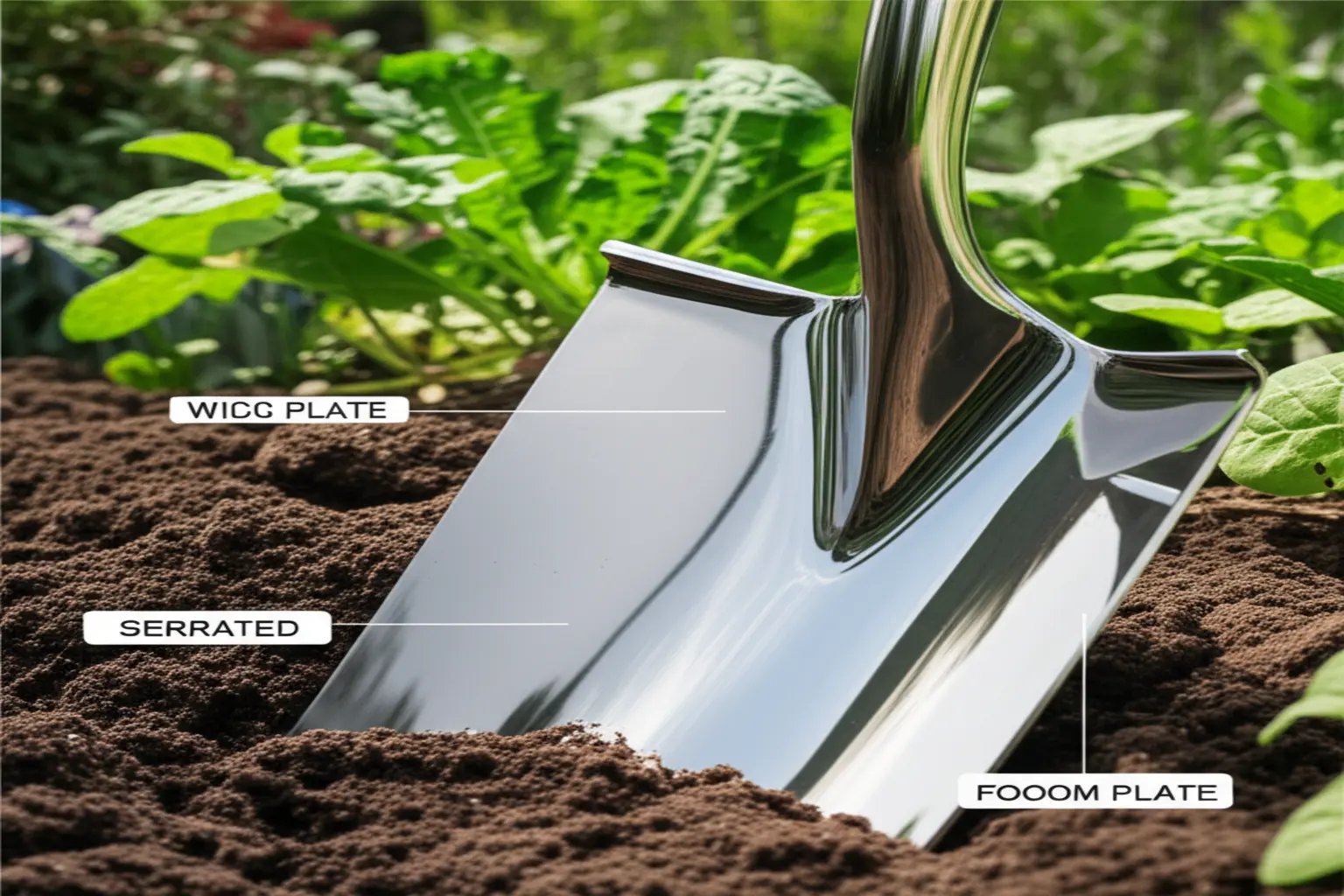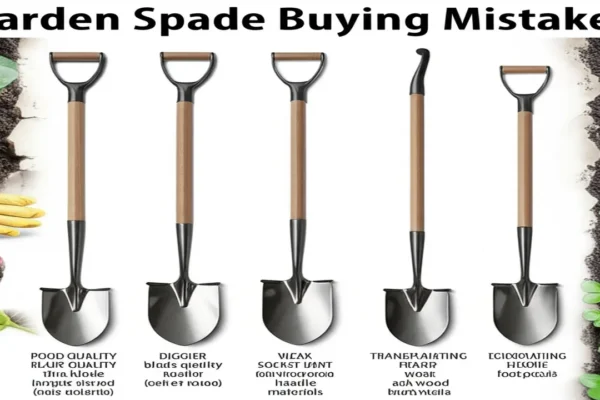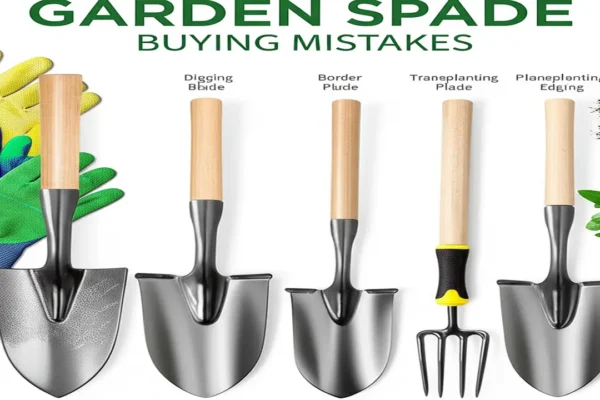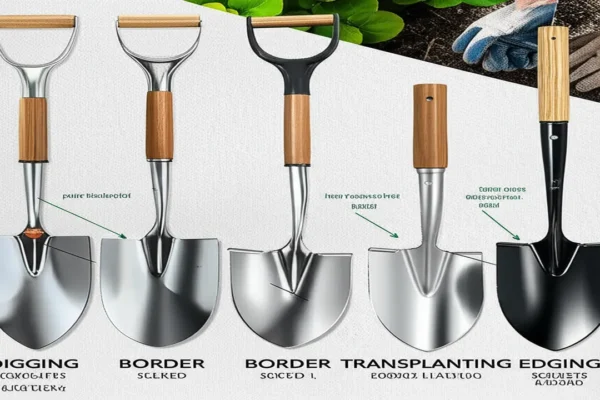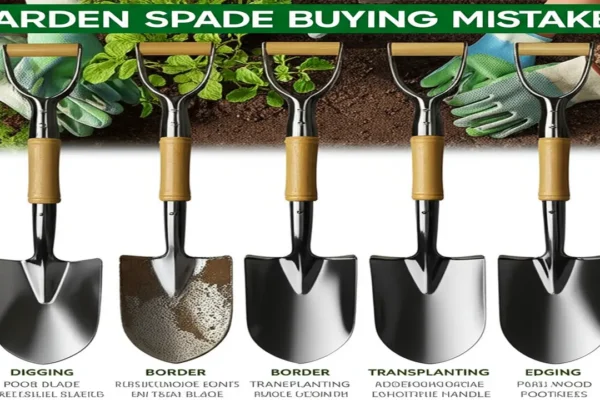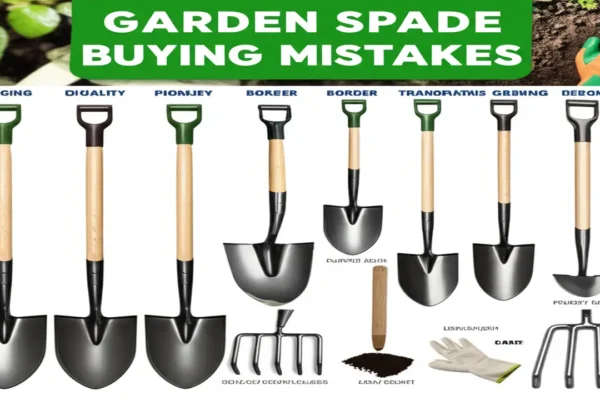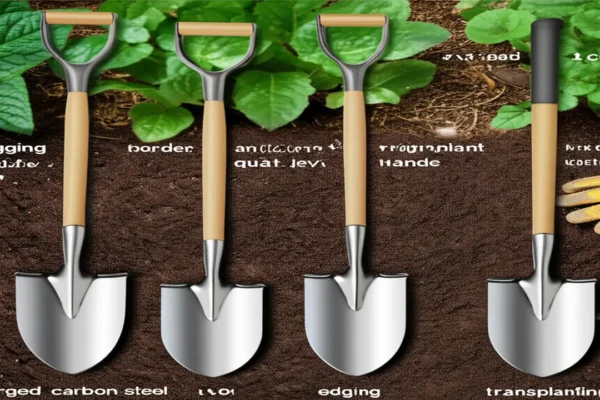1. What is the Garden Spade Foot Plate?
2. Anatomy of a Garden Spade: Identifying the Foot Plate
Key parts of a garden spade include the handle, shaft, blade, and foot plate. The foot plate is typically a flat, broad strip along the upper front edge of the blade. Its size and shape can vary but always serve the purpose of providing a stable area for foot placement. This allows the gardener to push the spade deeper into the ground efficiently.
Synonyms for the garden spade foot plate include foot step, step plate, or toe plate. These terms are commonly found in gardening manuals, tool descriptions, and among users when referring to this specific part. Noticing the foot plate is essential when selecting a spade, as a well-constructed plate improves ergonomics and durability.
For a more detailed understanding of selecting and maintaining tools with such parts, explore our guide on best garden spades 2025. This resource explains how foot plate design impacts the overall effectiveness and comfort of garden spades, helping gardeners make informed choices based on their needs.
3. The Purpose of the Foot Plate in Gardening Spades
Beyond leverage, the foot plate serves as a protective barrier for footwear, shielding shoes or boots from direct contact with the sharp blade edge. This protection avoids shoe damage and helps maintain traction and stability while working. The foot plate is designed ergonomically to distribute pressure evenly across the foot, reducing strain and preventing localized discomfort during prolonged spade use.
Safety features are also integral—many foot plates include textured or slip-resistant surfaces that prevent slipping, particularly when working in wet or muddy soils. This slip resistance significantly lowers the risk of foot injuries and enhances overall control of the garden spade during digging tasks.
Incorporating a garden spade with a well-designed foot plate, such as those featured among the best garden spades 2025, ensures both functional performance and user comfort. Understanding these benefits helps gardeners select tools that combine efficiency with safety and ergonomic advantages for a better gardening experience.
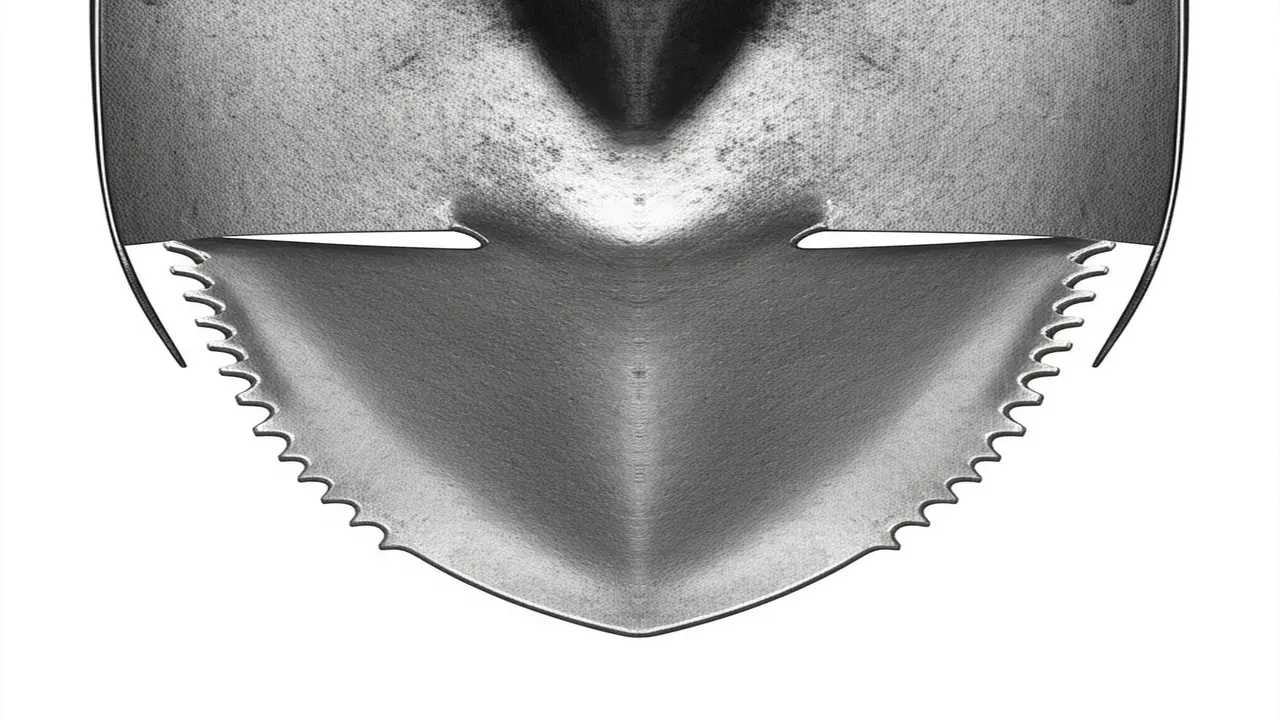
4. Types and Designs of Garden Spade Foot Plates
Design-wise, foot plates vary in shape and width to suit different gardening tasks. Standard or narrow foot plates are ideal for precision digging, whereas wide or extra-wide designs distribute foot pressure evenly for greater stability and comfort during prolonged use. Some models feature angled foot plates, ergonomically designed to reduce strain while applying force.
Surface textures also differ. Smooth foot plates facilitate easy foot placement and movement, while serrated or toothed foot plates improve grip on the soil and effectively cut through roots, enhancing performance in tougher terrain. This is particularly valuable when dealing with dense root systems in garden beds.
Connection methods also influence durability and functionality. Options include foot plates welded directly to the blade, forged integrally for maximum strength, or reinforced with socket connections to ensure stability under pressure. Such design decisions affect the tool’s longevity and how seamlessly the foot plate integrates with the spade blade.
For gardeners interested in combining quality and ergonomics, reviewing options like ergonomic garden spades can provide insights on models featuring optimized foot plate designs. Understanding these aspects of garden spade foot plates helps gardeners select the right tool for specific soil and gardening conditions in 2025.
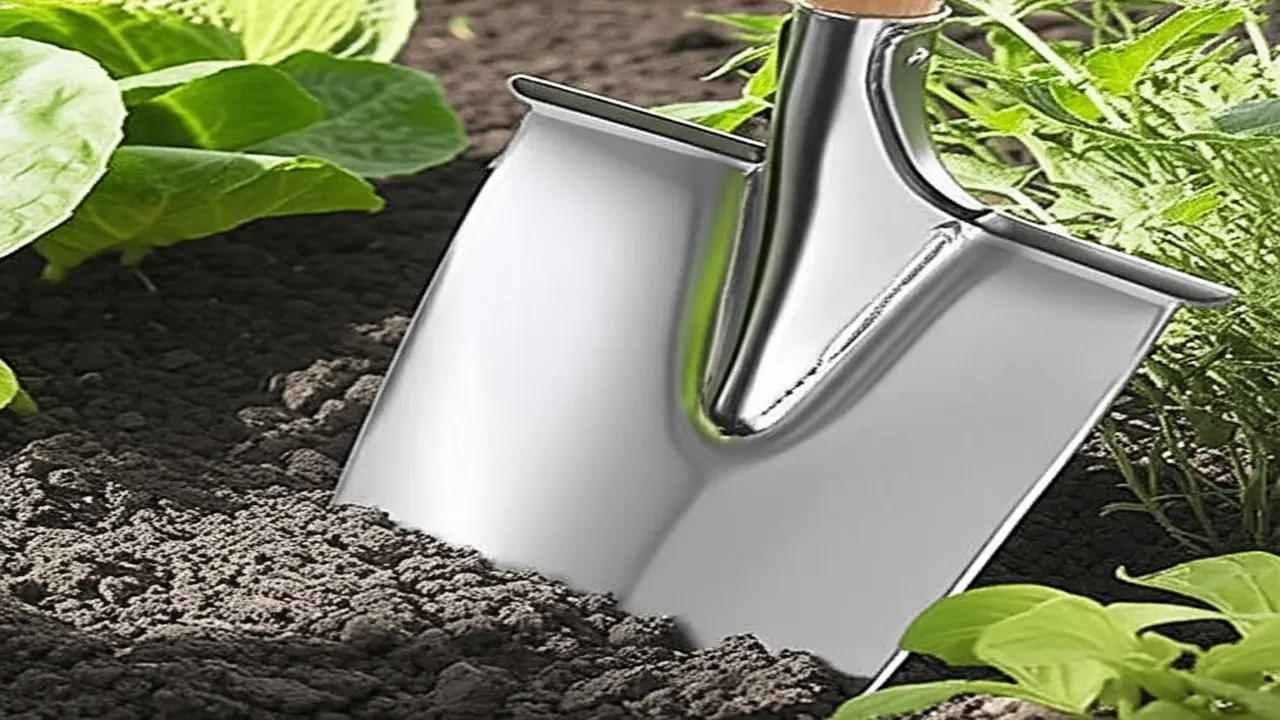
5. Characteristics of a High-Quality Foot Plate
The surface area of the foot plate should be adequately large to distribute pressure evenly, reducing foot strain and enhancing leverage. This design element significantly improves user comfort during prolonged use, especially when compact soil requires more force. Resistance to bending is vital; a foot plate that maintains its shape under stress ensures efficient energy transfer from foot to blade, preventing damage or fatigue in the plate. Selecting a garden spade with a foot plate incorporating these features guarantees a reliable tool for both amateur and professional gardeners. For insights on complementary tools that ease soil work, see best hand cultivators.
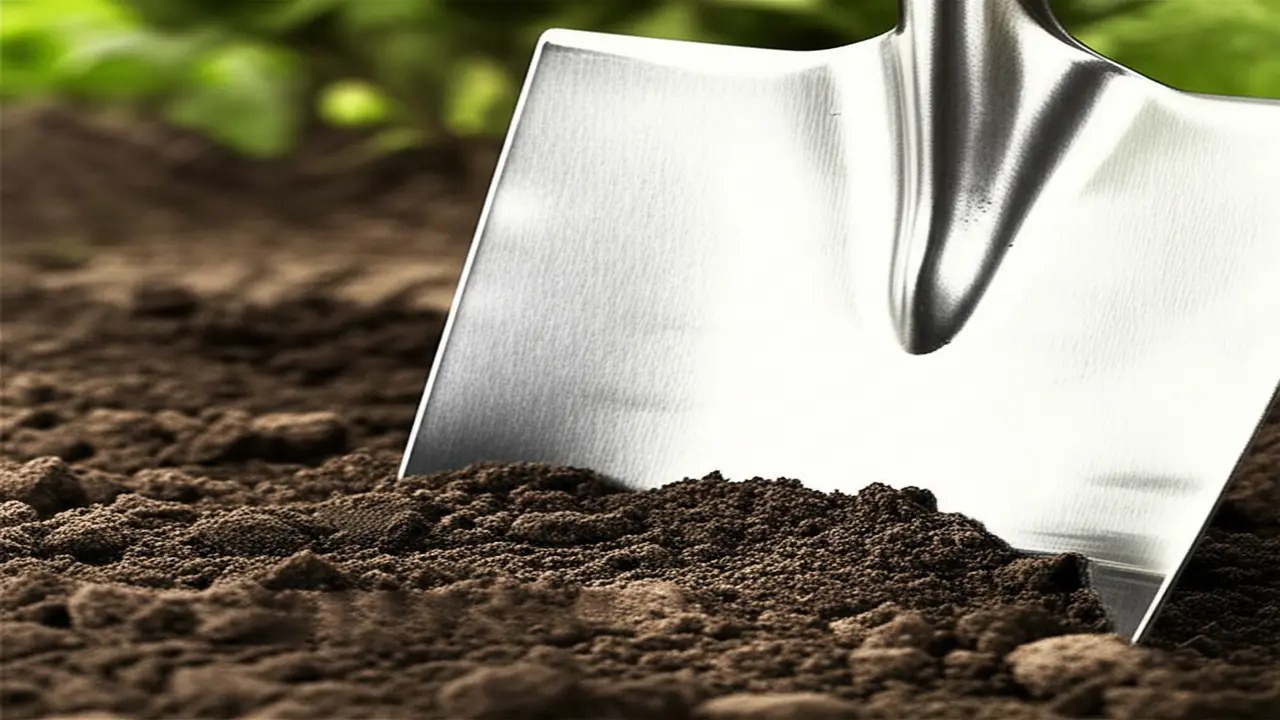
6. How the Foot Plate Affects Digging Performance and Usability
Foot plate designs are tailored for diverse gardening tasks. A robust foot plate with textured surfaces offers superior leverage and grip for edging and turning soil. This design reduces slippage and improves control, making these tasks less labor-intensive. Conversely, lightweight foot plates are favored for prolonged digging sessions to minimize user fatigue, especially for those with less physical strength or body weight.
Extended use of a well-designed garden spade foot plate supports better ergonomics by distributing pressure evenly, which lowers strain on the feet and legs, thereby improving overall working efficiency. Gardeners with varying physical conditions can benefit from models with adjustable or ergonomically contoured foot plates, giving customizable comfort and performance.
Understanding the connection between foot plate features and task requirements helps users select the right spade for their garden needs. For more specialized equipment options and care tips, consider visiting our comprehensive guide on best garden spades 2025, which includes insights on maintaining performance and comfort through tool selection.
7. Choosing a Garden Spade: Evaluating the Foot Plate
Material durability is essential; high-quality steel or reinforced alloys ensure longevity and resist wear. Pay attention to the foot plate’s connection to the blade—solid welds or rivets prevent weak points that could cause breakage under pressure.
Ergonomically, the foot plate design influences your planting efficiency. Wider plates distribute pressure evenly and support safer, more comfortable foot placement. Narrow plates reach tight spaces but may increase strain.
For gardeners interested in ergonomic tools, explore options with ergonomic foot plates designed to reduce foot and leg fatigue. To compare different models and find the right match, consult our best garden spades 2025 guide.
Choosing the right foot plate means assessing the soil type you often work with and balancing the trade-off between grip and comfort. Inspect the build quality carefully to select a spade that will reliably serve your gardening needs year after year.
8. Proper Use and Ergonomics Involving the Foot Plate
An ergonomically designed garden spade foot plate typically features a broad, textured surface that minimizes slippage, providing secure footing even on damp or uneven ground. This improved stability not only boosts digging power but also prevents accidental slips, which can cause injuries. Moreover, a well-shaped foot plate protects your footwear from early wear by distributing pressure evenly across the sole rather than concentrating it on a small contact point.
For example, when turning tough soil, avoid placing your foot at the edge of a narrow foot plate, which can lead to imbalance and discomfort. Instead, opt for spades with wider, reinforced foot plates that support your entire foot comfortably. This design consideration significantly enhances safety and reduces the risk of long-term joint strain.
In practical terms, combining the right technique with an ergonomic garden spade foot plate promotes healthier gardening habits. Understanding the balance between force and position helps prevent common issues such as foot slippage and shoe damage. For gardeners interested in complementary tools that prioritize comfort and efficiency, exploring ergonomic garden spades may provide additional benefits in 2025 and beyond.
9. Maintenance and Care Focused on the Foot Plate
Inspection of the foot plate must be frequent, focusing on signs of stress such as cracks, bends, rust spots, or loosening at the connection points to the shaft. Rust forms especially if the spade is stored in damp conditions. Applying a light coat of protective oil can inhibit oxidation and prolong the substructure’s durability. Any detected damage or deformation, like a bent plate, requires immediate correction—either through careful reshaping with appropriate tools or professional repair—to maintain digging precision and force distribution.
Proper maintenance routines align with best practices for garden spade maintenance, ensuring your tool remains reliable through repeated tough use. Prioritizing the foot plate’s care not only enhances performance in soil penetration but also extends the overall lifespan of your gardening equipment, making it a worthwhile investment in your garden’s health and your own efficiency.
10. Additional Insights: The Foot Plate’s Role in Overall Spade Quality and Tool Longevity
Innovations in foot plate technology by manufacturers focus on sturdier materials and improved attachment methods, such as welded or riveted plates that distribute pressure evenly. For example, garden spades with reinforced foot plates sustain repeated impacts without deforming, providing consistent performance over years of use. This design improvement mitigates common risks linked to connection failure and enhances overall durability.
Paying attention to the foot plate when selecting a garden spade ensures you invest in a tool built for resilience and efficiency. For those seeking comprehensive maintenance tips, exploring related topics like garden spade maintenance can extend the usability of your spade even further.
11. Supplementary Insights: Variations of Foot Plates by Spade Type and Use
The size and shape of the foot plate directly influence user comfort and efficiency. For example, a larger foot plate distributes pressure more evenly, reducing user fatigue during extended use, while a compact foot plate enhances control for detailed work. User preferences also play a role in choosing foot plate variations, as gardeners specialized in certain tasks may prioritize foot plate features that best suit their specific gardening style and soil conditions.
Understanding these distinctions can guide gardeners in selecting the right garden spade foot plate for their particular needs, whether the focus is on heavy-duty digging, precise edging, or careful transplanting. For those interested in detailed comparisons and maintenance tips, exploring reviews of best garden spades 2025 will provide further insights into selecting suitable tools and ensuring longevity.
12. Expert Tips and User Experiences on the Importance of Foot Plates
User experiences further highlight how foot plates with properly sized surfaces help distribute pressure evenly, protecting the foot and promoting better posture. Gardeners engaged in heavy soil turning or transplanting tasks find models with reinforced foot plates superior, enabling deeper, cleaner cuts without additional effort. This translates to improved overall gardening effectiveness and comfort.
Selecting a garden spade with a durable, ergonomic foot plate complements other design aspects such as handle comfort and blade sharpness. For those seeking guidance on quality garden spades that integrate these features, reviewing the best garden spades 2025 can offer valuable insights and practical recommendations.
13. Frequently Asked Questions about Garden Spade Foot Plates
When dealing with a damaged garden spade foot plate, repair depends on the extent of wear. Minor bends or dents can often be hammered out or reshaped by a professional, but severe damage usually warrants replacement of the foot plate or the entire spade to maintain safety and functionality. Speaking of safety, foot plate design plays an essential role in user protection: wider plates help distribute pressure evenly reducing foot strain, while textured or serrated designs prevent slips during vigorous digging tasks. For gardeners interested in optimizing tool choice and maintenance, exploring related topics such as best garden spades 2025 can offer broader insights on quality selections and care tips.

